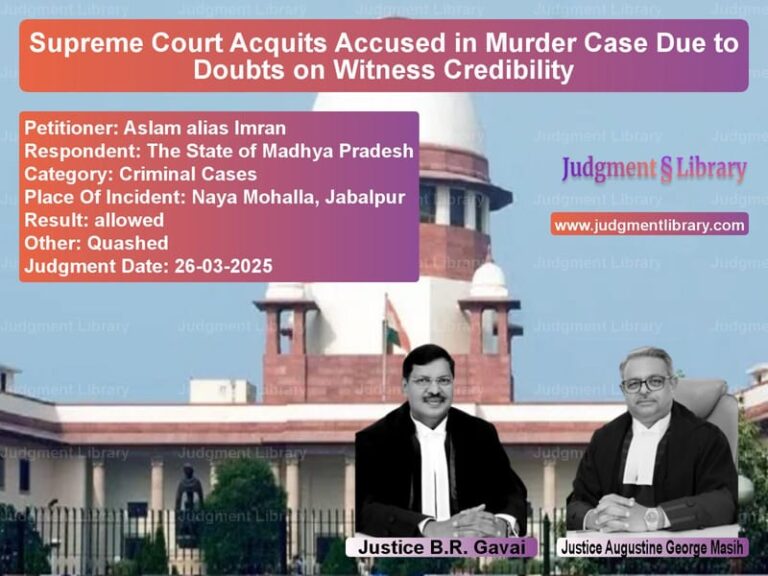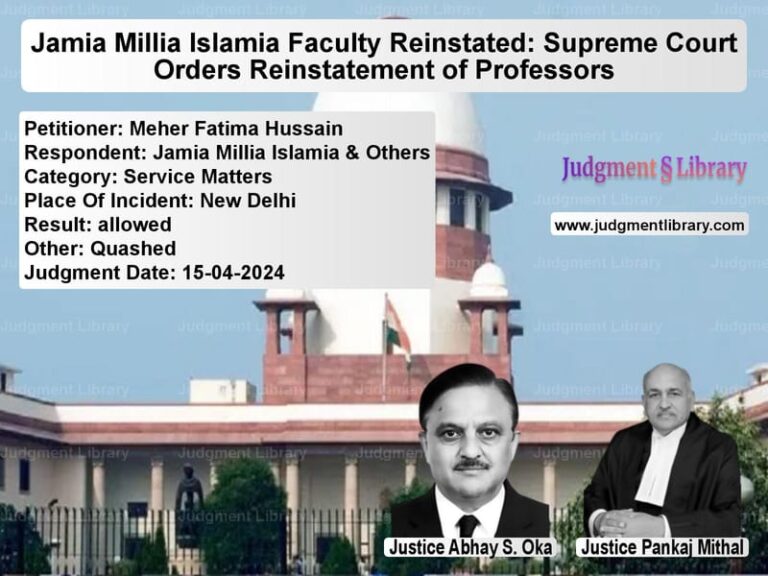Supreme Court Revises Iron Ore Mining Cap in Karnataka: Balancing Ecology and Economy
The Supreme Court of India has modified its earlier imposed ceiling limits on iron ore mining in Karnataka, increasing the permissible mining limits while ensuring environmental safeguards remain intact. The judgment is a crucial step in balancing economic development and environmental protection, particularly in the mineral-rich districts of Bellary, Chitradurga, and Tumkur.
Background of the Case
The case was initiated by Samaj Parivartana Samudaya and others, who filed a writ petition in 2009 highlighting rampant illegal mining activities in Karnataka. The Supreme Court, in response, imposed a ban on mining in 2011 and later introduced ceiling limits on iron ore production to prevent over-extraction and environmental degradation.
Following a series of interventions, in 2017, the Court partially lifted the restrictions, raising the mining cap to 28 million metric tonnes (MMT) for Bellary and 7 MMT for Chitradurga and Tumkur collectively. However, mining companies and the Karnataka government sought further relaxation, leading to the present ruling.
Arguments Before the Supreme Court
Petitioner’s Arguments (Samaj Parivartana Samudaya)
- The petitioners argued that the cap on iron ore production was necessary to prevent ecological damage and ensure intergenerational equity.
- They cited past instances of unchecked illegal mining that led to severe deforestation and depletion of natural resources.
- They opposed any further increase in mining limits, stating that the situation could regress into unregulated extraction.
Respondent’s Arguments (State of Karnataka, Mining Companies)
- The mining companies contended that they were being unfairly restricted despite complying with environmental regulations.
- The State of Karnataka supported lifting the ceiling, arguing that mining operations now adhered to strict monitoring mechanisms.
- They asserted that technological advancements and sustainable mining practices had significantly reduced environmental risks.
Supreme Court’s Observations
The Court examined reports from the Central Empowered Committee (CEC) and the Oversight Authority. The CEC recommended complete removal of the ceiling, while the Oversight Authority highlighted infrastructural limitations that needed to be addressed before a full relaxation.
Read also: https://judgmentlibrary.com/supreme-court-quashes-closure-order-for-gujarat-cold-rolling-steel-unit/
The Court observed:
“The concerns raised by the petitioners regarding environmental degradation must be weighed against the need for economic development. A calibrated approach is required to ensure sustainable mining without repeating past mistakes.”
Recognizing the improvements in regulatory oversight and infrastructure, the Court stated:
“The situation in Karnataka today is vastly different from 2011, when rampant illegal mining necessitated judicial intervention. There is now a well-defined monitoring mechanism in place.”
Supreme Court’s Verdict
Taking into account the submissions of all parties, the Supreme Court ruled:
- The ceiling limit for iron ore mining in Bellary is increased from 28 MMT to 35 MMT.
- The ceiling limit for iron ore mining in Chitradurga and Tumkur is raised from 7 MMT to 15 MMT.
- Mining companies must continue adhering to the Rehabilitation and Reclamation (R&R) plans approved by the Indian Council of Forestry Research and Education (ICFRE).
- The sale of iron ore will now be permitted outside the e-auction mechanism previously mandated by the Court.
- Monitoring and compliance reports must be submitted periodically to the Supreme Court.
Impact of the Judgment
This ruling has far-reaching implications for India’s mining industry and environmental governance:
- It paves the way for increased iron ore production, boosting revenues for the State of Karnataka.
- It ensures that mining activities remain under strict oversight to prevent illegal operations.
- It balances economic growth with environmental sustainability, setting a precedent for future cases.
- It provides a regulatory framework that other mineral-rich states may adopt.
By modifying the ceiling limits while maintaining ecological safeguards, the Supreme Court has provided a balanced solution that addresses both economic and environmental concerns.
Petitioner Name: Samaj Parivartana Samudaya.Respondent Name: State of Karnataka & Ors..Judgment By: Justice N.V. Ramana, Justice Hima Kohli, Justice C.T. Ravikumar.Place Of Incident: Bellary, Chitradurga, Tumkur – Karnataka.Judgment Date: 26-08-2022.
Don’t miss out on the full details! Download the complete judgment in PDF format below and gain valuable insights instantly!
Download Judgment: samaj-parivartana-sa-vs-state-of-karnataka-&-supreme-court-of-india-judgment-dated-26-08-2022.pdf
Directly Download Judgment: Directly download this Judgment
See all petitions in Environmental Cases
See all petitions in Public Interest Litigation
See all petitions in Judgment by N.V. Ramana
See all petitions in Judgment by Hima Kohli
See all petitions in Judgment by C.T. Ravikumar
See all petitions in partially allowed
See all petitions in Modified
See all petitions in supreme court of India judgments August 2022
See all petitions in 2022 judgments
See all posts in Environmental Cases Category
See all allowed petitions in Environmental Cases Category
See all Dismissed petitions in Environmental Cases Category
See all partially allowed petitions in Environmental Cases Category







